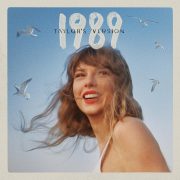We are a week into Pride month, and this year the celebrations are quieter than usual. Across the globe, we have seen an increasing amount of violence against the LGBTQ+ community and a violation of the communities’ rights.
In India, advocates are fighting the government for the right to marry and even years after we scrapped Act 377 – we are far from an equal world. In media, we have explored queerness in myriad ways – good but mostly bad. A few months ago, after actor Kit Connor was outed by intrusive fans, it started an intense discourse about ‘queerbaiting’ in media – a marketing gimmick where creators hint at an LGBTQ+ romance or character to ‘bait’ audiences but never actualize it. This practice is just one of the ways the media uses to profit off the community while doing nothing to support it. Another common practice of such creators, which often goes hand in hand with queerbaiting – is ‘Queer-coding’.
The idea is quite simple. It’s when characters may not be explicitly stated to be queer, but creators drop subtle hints throughout the plot, coding the character’s queerness. It’s not inherently bad – the concept emerged when creators originally wanted to write queer characters but couldn’t exactly confirm it due to societal attitudes towards sexuality. Over time though, many have turned the idea on its head, using it to perpetuate negativity about queer people.
The most famous example of this is Disney’s long-running practice of queer-coding its antagonists. Ursula, the nightmare-inducing villain in Disney’s The Little Mermaid was famously based on a drag queen. Other examples are Jafar from Aladdin and Scar from The Lion King. Many argue that this tendency of tv shows and movies to queer-code villains has created a bleak perception of the community among general audiences.
The most recent example of queer coding came from Glass Onion: A Knives Out Mystery. The sequel to the original Knives Out, reveals that Daniel Craig’s character, Benoit Blanc has a “male roommate” (played by Hugh Grant), an impeccable fashion sense and an almost physical aversion to Kate Hudson’s flirtatious behaviour. Some have suggested that, as they never explicitly state it, this is a form of queerbaiting. But that’s only the case if queerness dangled in front of the viewer’s face and then proven to not be the case. And that’s what makes it different from queerbaiting; the information is there if you’re looking hard enough.
We can identify queer-coded characters through the various, often stereotypical traits they exhibit, from male characters who take great pride in appearances and clothes, are emotional with a flair for drama or are the last people who you would want to be on your side in a fight, to hardboiled female characters who hate wearing typical feminine clothes.
We have seen so many examples of this in Indian pop culture as well, but most of these portrayals are typically insulting and do more harm than good. The growing significance of the LGBTQ movement and the Supreme Court’s decision to decriminalise homosexuality in India did not end the practice, rather Bollywood seems to have doubled down on these stereotypes. Villains in Bollywood movies exhibiting traits like cross-dressing or being transgender like Prashant Narayanan’s character, a sociopath serial killer who cross-dresses, in the 2011 film Murder 2 has done plenty of damage to the already tabooed community.
Even though ‘queer coding’ emerged as a creative outlet for writers, we have often misused it and perpetuated harmful stereotypes. In recent years, discussions about queerbaiting and queer coding have gained momentum, shedding light on the need for authentic and diverse portrayals of queer characters. Audiences are becoming more vocal in demanding genuine representation rather than mere hints and implications. As we continue into Pride month and beyond, it is crucial for society to promote inclusivity, acceptance, and understanding. Media plays a powerful role in shaping societal perceptions, and by challenging outdated norms and stereotypes, it can foster a more positive and supportive environment for the LGBTQ+ community.




